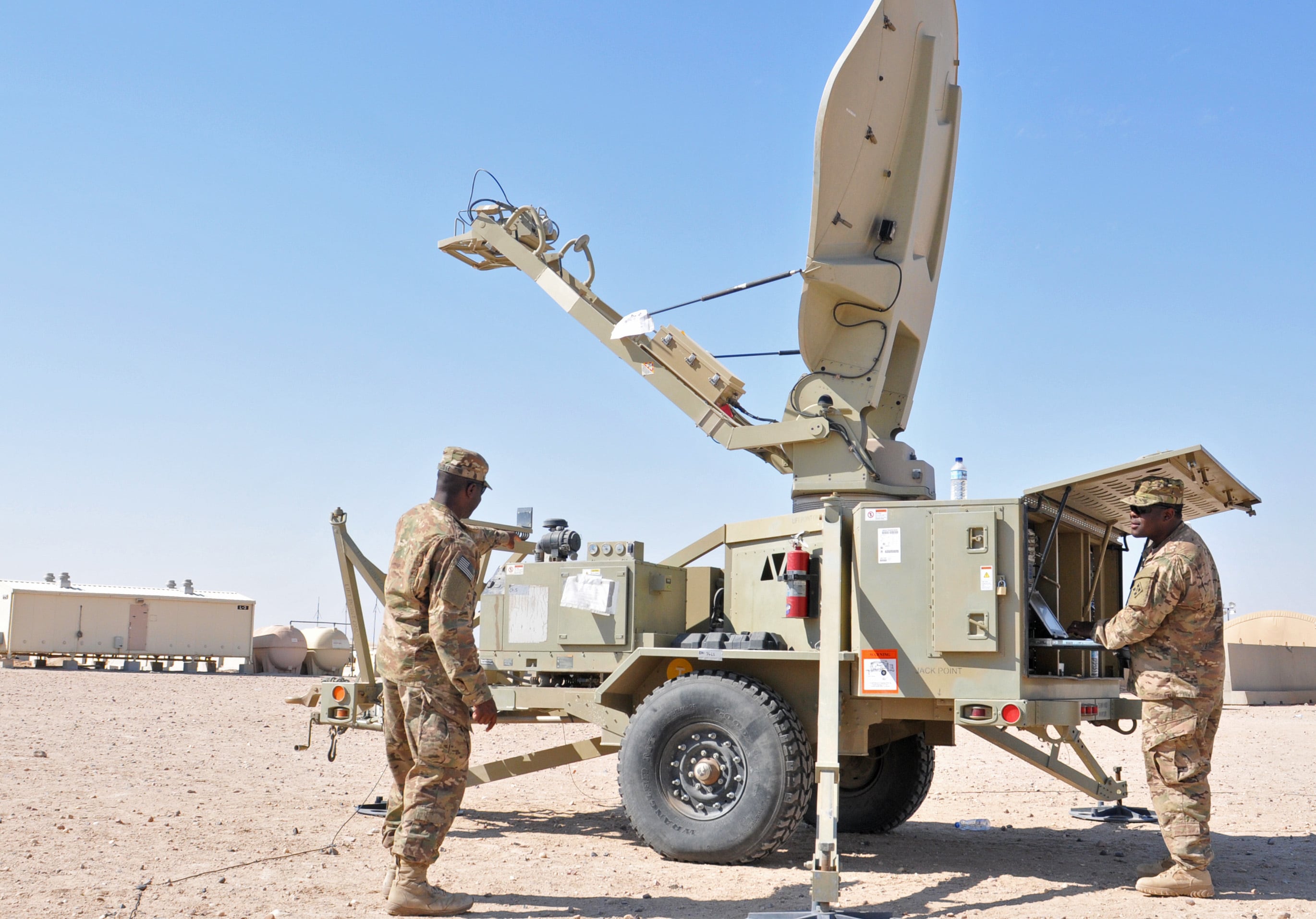The Army is interested in a new commercial satellite service with a focus on small, mobile terminals.
According to a July 2 request for information, the Army wants to expand beyond line-of-sight communications capabilities for tactical users with a new commercial satellite service. The proposed network would put small terminals, slightly bigger than the larger iPad Pro, in the hands of soldiers in the field, allowing them to communicate via a low earth orbit or medium earth orbit constellation.
John Swart, the director of the Army’s Technology Applications Office, said that the Army was simply interested in learning more from industry. He declined to provide further comment.
The Army currently relies on a combination of military and commercial satellites for beyond line-of-sight communications, but satellite coverage and the size of terminals can limit their availability. The suggested satellite service would provide the Army with global coverage, excluding the polar regions.
Part of the benefit of using LEO or even MEO satellites is that they reduce the need for larger, bulkier terminals. Since they are closer to Earth, users need less powerful terminals to communicate with the satellites. That means the terminals can be physically smaller, and that’s a key focus of the request.
The Army wants the commercial satellite service provider to supply troops with so-called “ultra sat terminals” ― basically small terminals 12 inches by 12 inches. Ideally, the Army wants terminals for aircraft, vehicles and dismounts that are small enough to fit in a rucksack, although airborne terminals can be larger. These terminals would preferably be able to switch between satellites as they move from coverage area to coverage area, allowing for uninterrupted service.
Broadly, Department of Defense leaders have said that as they develop new satellite architectures they will have face a significant expense in replacing legacy terminals that are not compatible with modern satellites.
While the service said it is willing to obtain the satellite services and terminals from different suppliers, they would prefer to go with one provider. It’s not clear from the request how many terminals the Army would be interested in acquiring.
Responses to the request were due July 31.
Nathan Strout covers space, unmanned and intelligence systems for C4ISRNET.








